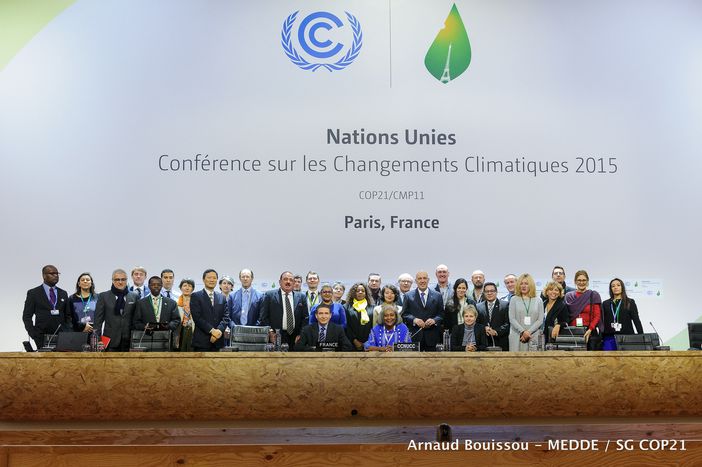
A young tracker's take on the new climate draft
Published on
After a little more than three days of negotiations, the Ad Hoc Working Group on the Durban Platform for Enhanced Action (ADP), the body charged with drafting a new climate agreement, has released a new version of the Paris text. Here is a brief analysis of the main issues at stake from a young "Climate Tracker" at COP21.
Released early morning on Thursday, the 50-page draft doesn’t bring much novelty on content as a lot of discussions are still ongoing in the spin-off groups, but has helped making the text more approachable. Compared with the previous version, a lot of work has been made to streamline the text and to reorganise the various options, making it easier for ministers to dive into it.
The number of brackets – that averaged 1400 in the previous text – fell down to 1250, while the number of open options hasn’t significantly changed, according to Matthieu Orphelin, the spokesperson for the Nicolas Hulot Foundation, a French-based environmental organisation.
Few bridging proposals
So far, negotiations have been fairly slow and a lot of work still needs to be done in order to come up with so-called “bridging-proposals”. They are essential in order to build consensus and find common grounds between the Convention’s 196 Parties.
The new text doesn’t provide many of these so far. The article on loss and damage hasn’t changed since November and only includes two options that reflect an all-or-nothing approach. At this stage, none of them would manage to rally support from all Parties and a bridging proposal is highly needed if this issue is to be included in the final agreement.
2100 reference is out
On climate mitigation, most options have been retained, including the language on climate neutrality and decarbonisation. Options that make mitigation commitments legally binding were also kept in. The main casualty in this article is the objective of 100% renewable energy that was stripped off the text, although civil society hopes it will be brought back in. One good news for climate activists, is the removal of the 2100 reference on emissions reduction objectives. Setting 2050 as time horizon stresses the urgency of climate action, whereas 2100 would have sent the signal to investors and other decision-makers that delaying action is ok.
The ADP document maintained the idea that future commitments will have to be more ambitious overtime and kept the five-year cycle for pledges. An option for ex-ante review of these pledges also made the cut which will ensure that future mitigation commitments are assessed on their adequacy with regard to the long-term goal.
The text leaves open the +1.5°C and +2°C maximum temperature increase options, leaving this tricky question for ministers to resolve. Following the Climate Vulnerable Forum call for action, the past days in Paris have seen increasing support for +1.5°C with France and Germany openly backing this option.
Some progress was made on streamlining the text for adaptation, although no game-changing edits have made it into the draft. Support seems to remain strong for a stand-alone adaptation goal, a key demand from developing countries while the section on risk management and early warning and emergency responses was taken out.
Means of implementation, the main issue of contention
No significant changes were made in the area of climate finance. Although paragraphs have been reorganised, the content remains essentially unchanged.
On the issue of technology development and transfer, the main change resides in the addition of a specific mention to adaptation and mitigation in relation to the global goal for technology that is to be established at the first meeting of the parties to the future Paris agreement.
Overall, most decisions will come down to the provision of adequate and satisfactory means of implementation for developing countries which is still the main stumbling block.
On Saturday, negotiators are due to hand over the text to ministers who will dive even deeper into the political discussions. This means that negotiators have less than 48 hours left before their task will be completed. The text that we have seen today doesn’t constitute strong progress per se, but it has the merit of making the agreement easier to read and more accessible for ministers. Spin-off groups are due to finalise their work tonight which means that a new text including the outcome of their discussion can be expected in the days to come. Hopefully, it will include some concrete proposals on how to bridge gaps on key unresolved issues.



